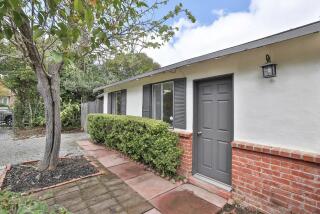At 60, a church blends Arabic, English and Spanish
Each Sunday at St. Nicholas Antiochian Orthodox Christian Cathedral in Los Angeles begins with two services, representing the old and new at the decades-old congregation.
The morning starts with an 8 a.m. liturgy in Spanish, followed by a larger service at 10 a.m. in English and Arabic.
But this weekend, both groups of congregants will come together for a shared service as the cathedral celebrates its 60th anniversary, a period that has witnessed a change in the church as new generations and members have joined. The special day will be observed with a sermon about the cathedral by Bishop Joseph, who heads the denomination’s Diocese of Los Angeles and the West. A celebration banquet will follow.
The parish’s roots date to the early 1900s when Syrian and Lebanese Orthodox immigrants in Los Angeles began organizing and working to found a church. In 1948, St. Nicholas’ foundation was laid and it opened its doors two years later. In its first years, services and sermons were mostly in Arabic, but as the second, third and fourth generations came along — and their connection with their parents’ and grandparents’ language weakened — English has taken on a more prominent role in services.
The Antiochian Orthodox Christian Church dates to the time of the apostles, according to church tradition. Officials say the denomination has about 5 million followers worldwide, with about 300,000 in North America.
Orthodox Christianity, mostly found in parts of Europe and the Middle East, split from other denominations in the 11th century, mostly over papal allegiance and authority.
In the mid-1990s after the Los Angeles riots, leaders of St. Nicholas decided the church needed to reach out to the residents of its neighborhood of poor and working-class Latinos. It launched a Saturday morning class for children, offering breakfast, singing and Bible studies. Parents were invited to attend as well.
Father Paul Olson, who leads many of the Spanish services, remembers driving up from Orange County with his children to attend those Saturday gatherings. He would bring his guitar and sing songs to the children gathered at the church.
But a Spanish ministry at St. Nicholas was still in the future, Olson said. “People just didn’t have an antenna for it yet, they were just excited about all the evangelicals coming in,” he said.
Eventually some of the parents attending the Saturday classes with their children began asking about a Spanish service and ultimately, about converting to Orthodox Christianity. At first, the early service was a scaled-down version but it has grown into a full liturgy, just like its English/Arabic counterpart later in the day.
“We are in this neighborhood, we want to do outreach to our neighbors,” said Father Michel Najim, dean of the cathedral. “When you live in a community that has a cultural background, [we] need to open up to other cultures and other denominations.”
About 1,500 families are members of St. Nicholas’ congregation. Olson estimates the church’s Latino membership at 40 to 45, with about two dozen typically attending Sunday services. Many in the church would like to see the Spanish ministry continue to grow, he said, but for now it lacks the people to do more outreach.
Although the church’s two main ethnic groups don’t regularly interact — except for holiday food and gift drives, and occasional joint services — the new Spanish-speaking members have been welcomed by the older members of mainly Middle Eastern ethnicity.
“From the perspective of the Arab community, I see it’s really good to be working side by side with the other community,” Olson said. “From the Hispanic perspective, they just think it’s really cool that the Arab community shares their facilities with them and shares their faith with them. They just seem pleased as punch.”
At the church’s annual Mediterranean festival in June, tacos are now sold along with the congregation’s traditional Middle Eastern fare, falafel, shawarma and kebabs. Minerva Vargas, whose family has been members for 15 years, has helped sell the tacos alongside her mother, Adriana.
For neighbors who come by the festival, the new taco stand is sometimes an introduction to the church’s Spanish ministry, Vargas said. Last June, she said, a man came to the stand and asked her mother questions about the faith and the church. Soon he began attending Sunday services regularly.
More to Read
Start your day right
Sign up for Essential California for news, features and recommendations from the L.A. Times and beyond in your inbox six days a week.
You may occasionally receive promotional content from the Los Angeles Times.







